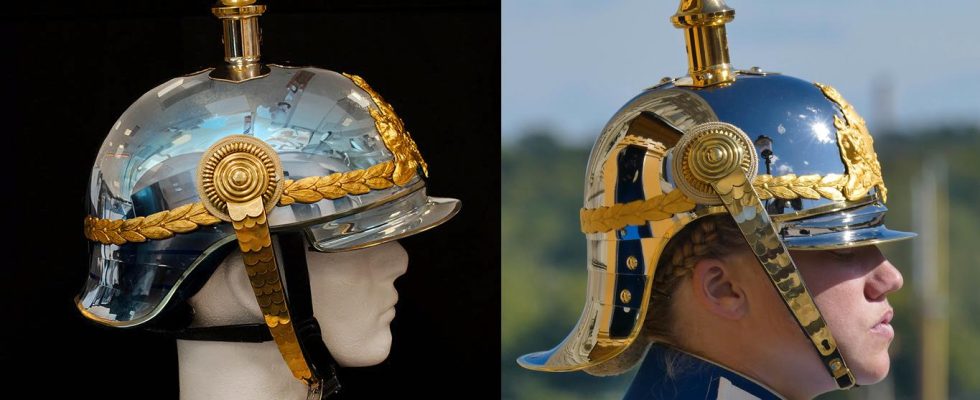unsaveSave
expand-left
full screen The new helmet (left) is slightly larger than the old one to provide the same protection as a regular riding helmet. Photo: Leif Blom/TT, Svecon/The Armed Forces
It should look like the original, but still meet modern safety requirements. There is now a prototype for how mounted the high guard’s new parade helmets should look.
– The new helmet is about 15 percent larger, but those who don’t know that won’t see any difference, says Major Hans Augustin, regimental ceremony officer at the Life Guard and project manager for the new helmets.
The size difference comes from the fact that it should provide the same protection as a normal riding helmet.
It was last year that the parade helmets were stopped after the Swedish Work Environment Authority determined that they had serious safety deficiencies. Instead, 200 ordinary black riding helmets were bought in for use by staff on horseback.
The new helmets, which have been named parariding helmets, will be ready for use in the spring of 2025 at the earliest, depending on the manufacturing time.
– It takes some time to manufacture a completely new product. There is nothing on the market like this, says Hans Augustin.
Only the riding staff will have the new helmet. The old one will remain and be used in all parades conducted on foot in parade uniform model 1895.
FACT Ride the high guard
Mounted guard duty is a tradition with roots from the 18th century.
The mounted guard parades are carried out by the Armed Forces, the Life Guard’s Dragoon Music Corps (LDK) and the Life Squadron from the Life Guard.
The former parade helmet is part of the uniform equipment and belongs to a parade uniform from 1895 (older model).
Several modifications to the old helmet have been made over the years. The most recent in 2000. Until the spring of 2023, a project was underway to improve the old parade helmet with a new safer interior, however without Mips protection.
Source: The Swedish Armed Forces, Beridna högvakten
Read more
